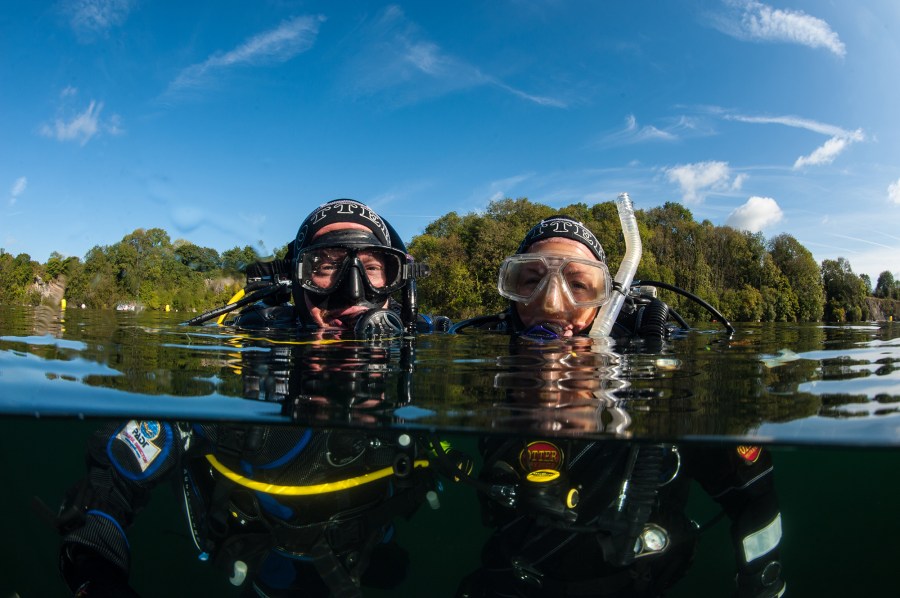Seek adventure and discover the magical underwater world that awaits around the UK coastline by going for a wild dive, says BECKY ROBERTS.
When most people first consider learning to dive, they imagine themselves in tropical, warm waters, but with thousands of miles of coastline, glorious wildlife and a rich maritime history, the UK offers some of the best diving in the world and there’s so much to explore!
Whether you’re a complete novice looking to start a new hobby and you want to ‘test the waters’ with a fun dive experience, you’ve tried an introductory dive on holiday and want to explore more, or you’re an experienced scuba diver seeking advanced certifications and adventure – exhilarating and memorable dive experiences can be found right here in the UK at over 180 PADI Dive Centres.
The waters around the UK and Ireland are home to a catalogue of Marine Protected Areas, thousands of historic shipwrecks and over 850 varieties of marine life ranging from crustaceans, conger eels, seahorses and octopuses, to jellyfish, seals, dolphins, and even sharks. So, there is plenty to see.
Here PADI, (Professional Association of Diving Instructors), the world’s largest diving organisation, rounds up ten of the UK’s best dive destinations.
Chesil Beach, Dorset

Take a trip to the Jurassic Coast (a World Heritage Site) and you’ll find dramatic red cliffs preserving millions of years of natural history and surrounding some of the UK’s best dive sites.
Weymouth and Portland offer both shore dives (Chesil Beach is a popular training site) and the HMS M2 submarine and Aeolian Sky are both top wrecks to visit for more experienced divers. Swanage Pier, at four metres deep, is a fantastic, novice-level shore site where no two dives will be the same.
Reasons to visit: family attractions and entertainment, beautiful beaches.
Porthkerris, Cornwall
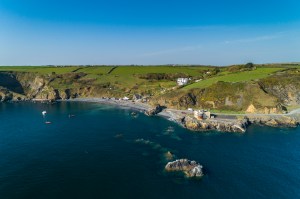
On the Lizard Peninsula at Porthkerris, there’s some excellent shore diving. Sheltered from the prevailing south-westerly winds, a handy beach entry gives access to a rocky reef close to shore.
Invertebrates, including tube worms, anemones and sea urchins colonise the hard substrate, but keep your eyes open as encounters with basking sharks and pods of dolphins are a real possibility.
Reasons to visit: incredible beaches, coastal walks, family days out, culture and active sports.
Falmouth Bay, Cornwall
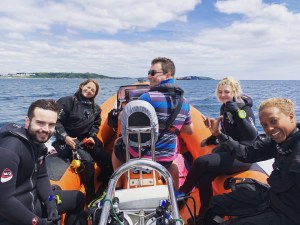
Falmouth is incredibly accommodating for all levels of diver, thanks to its line-up of both shallow and offshore dives within easy reach. Pendennis and Castle Beach are particularly popular shore and night dives for both scuba divers and snorkelers, and are home to the wrecks of First World War submarines; keep an eye out for cuttlefish and dogfish too.
The Hera is a great beginner’s wreck, spread across two halves and each encrusted with sponges, fans, and dead man’s fingers. For something a little different, the Falmouth Estuary and Helford River lay claim to excellent sightings of thornback rays in spring.
Reasons to visit: dog-friendly and family-friendly beaches – iconic sandy beaches to intimate sheltered coves. Falmouth’s 300+ beaches are gloriously varied.
Scapa Flow, Orkney

In 1919, at least 52 vessels of the German fleet were scuttled in Scapa Flow on the Orkney Islands off Scotland’s northern coast. Many have been salvaged over the years, but the remaining wrecks provide an eerie reminder of turn-of-the-century naval technology and have become some of the most famous wreck sites in the world, let alone the best dive sites in this area. The wreck dives here include three 580 foot battleships and four 510 foot cruisers.
Reasons to visit: adventure, wilderness, stunning nature, outdoor family fun.
Pembrokeshire, Wales

Home to Pembrokeshire Coast National Park (the only coastal national park in the UK), this area has it all, from beachy shore dives (St Brides, Martins Haven) to countless wreck dives at all depths.
The Dakotian sits in just 20m of water while The Lucy offers a more adventurous 40m. For technical divers, The Drina touches the seabed at 60m. Further afield, the island of Grassholm is not only a superb diving spot, but home to one of the world’s largest gannet populations.
Even further, about 20 miles out to sea, The Smalls Lighthouse needs calm seas to be reached, but is worth the journey as you’ll be surrounded by seals playing amongst the pinnacles and gullies. Pembrokeshire is renowned for its rich concentrations of marine life including blue sharks, dolphins, sunfish, rays, lesser-spotted catsharks, octopus, lobsters, conger eels, crabs, starfish and more.
Reasons to visit: coastal national park, adventure, off the beaten track.
Farne Islands, Northumberland

Located off the Northumberland coastline, the Farne Islands are just a stone’s throw from the Scottish border and a popular checkpoint for divers travelling up into Scotland.
While the islands are surrounded by wrecks and beautiful reefs, the attraction here is clear and simple: seal encounters! There’s estimated to be thousands of grey seals in the area, and they’re very accustomed to visits by divers. Don’t be surprised if you find your fins being tugged by one of these playful residents!
Reasons to visit: good stop en route to Scotland, amazing sea life (grey seals and puffins!)
Jersey

Offering warmer waters than mainland UK, this Channel Island is a great option for winter months. Plenty of shore diving options offer colourful reefs, rays, wrasse, flat fish, cuttlefish and more.
Jersey has one of the biggest tides in the world, creating fun drift dives where you can see rays and plenty of scallops. The historical wrecks that lie around the island are teeming with marine life such as pouting and conger eels. Boat trips further out from the island are also available, where divers can find soft sponges and fan corals covering reef walls and beautiful kelp forests where the resident seals come to play.
Reasons to visit: beaches, culture, heritage, family.
Oban, Scotland
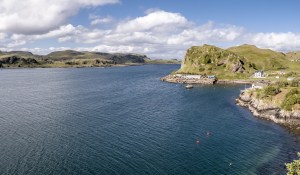
The presence of the nearby Gulf Stream and unpolluted waters of the Firth of Lorne make Oban and other sea lochs a mecca for UK diving enthusiasts.
There is diving here to suit everyone, from pleasant scenic dives in wrecks both shallow and deep, to hairy drift dives with tidal flows exceeding 15 knots and deep drop-offs.
The marine life is abundant, with walls covered in anemones, sea squirts and sponges, lobsters and conger eels. You can also discover wildlife such as otters, seals and skate that teem in these pure waters.
Reasons to visit: scenic destination, Scottish highlands culture, nature.
Brighton, Sussex
The Indiana wreck is located roughly one mile out to sea from Worthing Pier. It rests in 8-12m of water depending on the tide. The Indiana was a British steam ship returning from Sicily with its cargo of lemons or oranges (although these have long since gone). She sank due to a collision with a German steam ship called The Washington, which survived the crash while on her journey to New York.
This is one of our most frequently dive wrecks as it is perfect for novice and experienced divers. It has bags of marine life including large schools of bib and whiting, conger eels, crabs and shell fish. A great way to enter the world of UK sea diving.
Reasons to visit: proximity to London, wreck diving, nightlife, culture, shopping.
Menai Strait, Anglesey
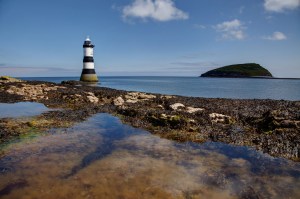
Separating Anglesey from mainland Wales, the Menai Strait offers exciting drift diving thanks to these tidal waters. Divers can enter from shore close to the impressive Menai Bridge, and drift with the tide at a maximum depth of around 17 metres.
The water movement ensure plenty of nutrients to feed sponges and anemones that provide spectacular colour as you pass through the strait, whilst gobies, blennies and all other manner of fish are easy to spot. The tides can be strong here and it is recommended that your first dive is with a local dive centre so they can advise you on the best techniques.
Reasons to visit: remote beaches off the beaten track, rich history, ancient sites and coastal walks.
ABOUT PADI

PADI (Professional Association of Diving Instructors®) is the largest purpose-driven diving organisation with a global community of 6,600 dive centres and resorts, 128,000 professional members and more than 30 million certified divers to date.
Entirely committed to our blue planet, PADI empowers people around the world to experience, explore and take meaningful action to protect the world beneath the surface. For over 50 years, PADI is undeniably ‘The Way the World Learns to Dive’, setting the standard for the highest quality dive training, underwater safety and conservation initiatives.
For more information contact visit padi.com, or simply scan the barcode.


